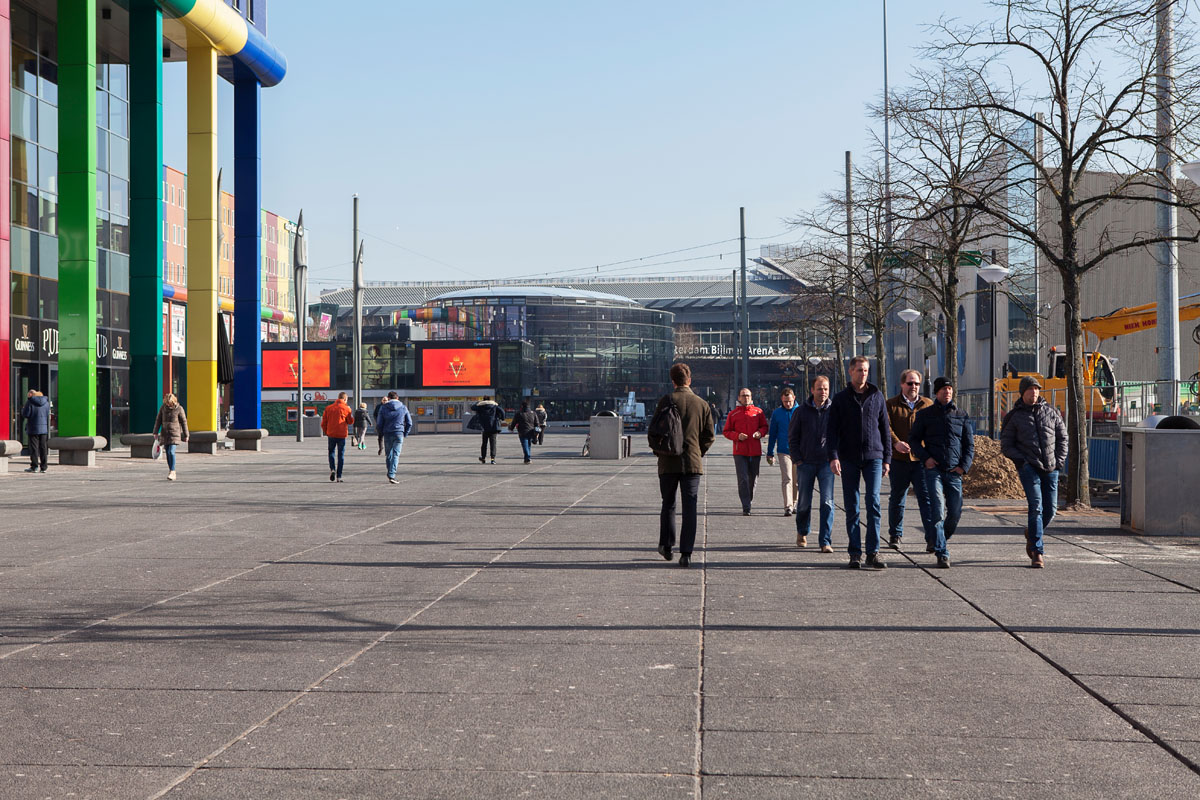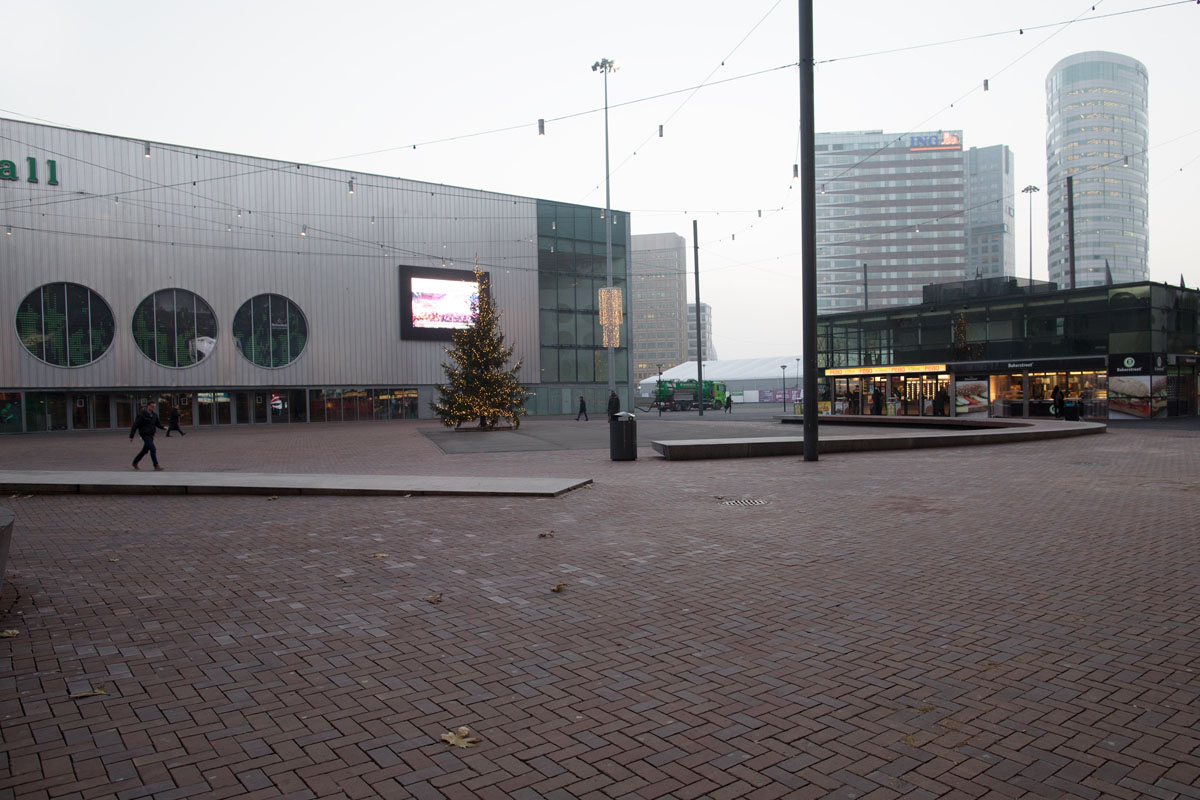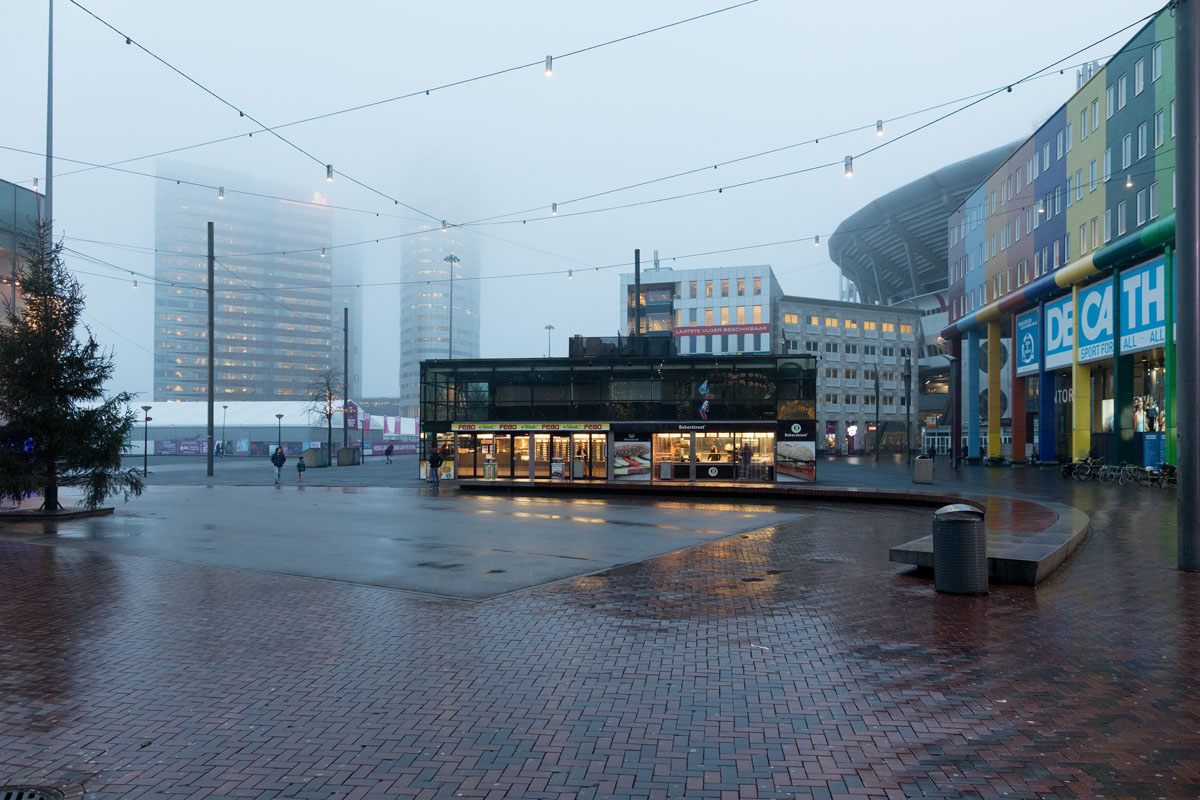How can we make public spaces real-time adaptive according to users’ needs?
During rush hours, the ArenA Boulevard is designed to hold 100,000 visitors. However, after peak moments, the size and design of the public space becomes too large and impersonal for the number of visitors. As a result, it negatively effects the safety perception of pedestrians and attractiveness of the space. In this project, the unique cooperation of various organizations and the possibilities of light, sensors, and sound control, making the space responsive to adapt to users’ needs.
Research question and approach
How can interactive installations be incorporated in the design of responsive public spaces, to improve the quality and safety perception of visitors at off-peak hours?
The research is divided in three phases. The first phase maps out the qualitative and quantitative data of user experiences. In the second phase, we explore with project partners, how the spatial development of interactive objects can be designed, developed, and composed. In the third phase, the prototypes are tested on the test-site, the boulevard, and the effects will be evaluated.
Intended results
Recommendations will be made based on lessons learned from the development of responsive public spaces. Expected end products are:
- Responsive Public Space: an attractive design manual with roadmap (insights
and results of the research project). - Recommendations, to develop a responsive public space in co-creation.
- Inspiring case study of responsive public space.
The acquired knowledge will be shared through education, SME enterprises, and Science. For example, newsletters, publications, presentations, and final seminar.





